
Sudden pain radiating from the lower back and buttocks down the leg can be a sign of sciatica (sciatica). This pain is often likened to a “stabbing”. Common in both men and women, sciatica pain can occur gradually or suddenly.
Sciatica pain, which develops due to orthopedic diseases such as herniated discs and narrowing of the lumbar canal, can worsen especially in later life. The good news is that many of the symptoms of sciatica diagnosed at an early stage can be treated without surgery.In the rest of our article; “What is sciatica?”, “What are the symptoms of sciatica?”, “What causes sciatica?”, “What are the risk factors in sciatica pain?”, “How is sciatica treated?” and “What should sciatica patients pay attention to?” You can find answers to your questions.
Table of Contents
- What is Sciatica?
- What are the Symptoms of Sciatica?
- What Causes Sciatica?
- What are the Risk Factors for Sciatica Pain?
- How is Sciatica Diagnosed?
- Sciatica Treatment
- What Should Sciatica Patients Pay Attention To?
What is Sciatica?
Although sciatica is popularly known as a disease, it actually refers to a nerve in our body. The sciatic nerve, formed by the union of five nerve roots (L4, L5, S1, S2, S3) in the lower spine, forms the longest and widest nerve network in our body. It starts in the lumbar region and continues to the legs and toes. It branches into many nerves, especially after the knee joint.
Sciatica, used in the sense of disease, refers to pain caused by irritation and/or compression of the sciatic nerve. In other words, it can be called “sciatica”. The term “pinched nerve in the hip” is also used. People with this condition may describe the pain they experience as “shooting pain from the hip to the leg”.
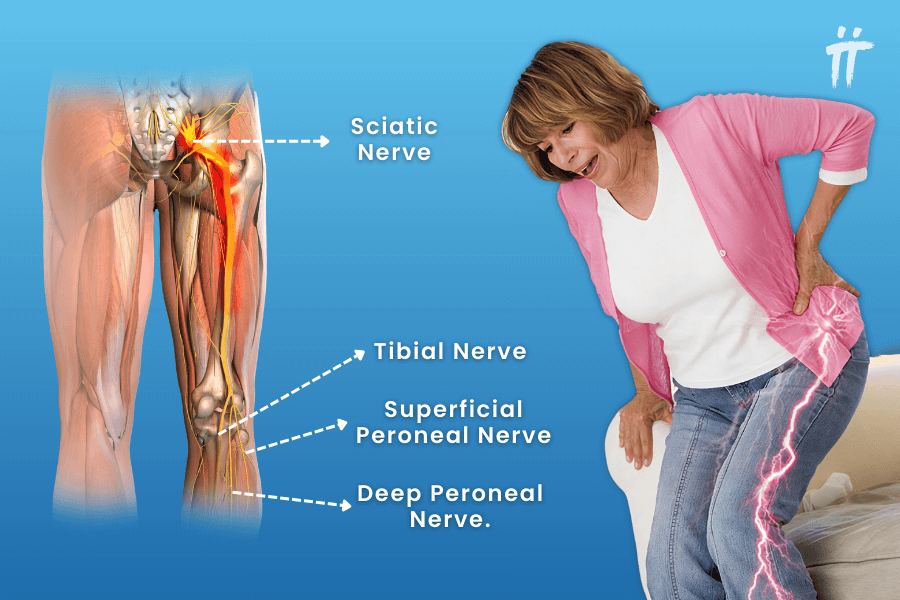
There are different types of sciatic pain depending on the duration and the affected leg:
- Acute Sciatica: Acute sciatica is sciatic pain that persists for 4 to 8 weeks. It usually starts suddenly and lasts for a short time. Acute sciatica pain can get better on its own, usually within a few weeks.
- Chronic Sciatica: Chronic sciatica is sciatica pain that lasts longer than 8 weeks and usually does not go away with home treatments. Chronic sciatica pain can be caused by more complex causes and can be more difficult to treat.
- Single Leg Alternating (Alternating) Sciatica: Alternating sciatica affects both legs alternately and is characterized by pain, numbness or tingling in the leg. Alternating sciatica is a rare type and can be caused by degenerative problems in the sacroiliac joint (the joint between the spine and pelvis).
Bilateral Sciatica: Bilateral sciatica is a rare type of sciatica that occurs in both legs. It can be caused by degenerative changes in the vertebrae or discs, or by serious conditions such as Cauda equina syndrome (excessive pressure and swelling of the nerves at the end of the spinal cord).
What are the Symptoms of Sciatica?
Sciatica pain can occur anywhere the sciatic nerve passes. However, pain from the lower back and buttocks to the leg is common. The pain can be mild or severe depending on the degree of pressure on the sciatic nerve and usually affects one side of the body. Apart from these, common symptoms are listed below:
- Pain: The most common symptom. The pain usually starts in the lower back and radiates to the buttocks and leg. Some people describe the pain as a burning sensation, an electric shock or a sharp sting.
- Nbness or Tingling: The affected leg may feel numb, burning or tingling.um
- Weakness: Loss of strength or a feeling of weakness in the affected leg. This can cause difficulty in performing simple movements.
- Changes in Pain Depending on Position: Certain positions, such as sitting, standing or walking, can increase or decrease pain. The pain may increase with coughing, sneezing or straining.
- Icreased pain when sitting: Sitting can increase pressure on the sciatic nerve, which can lead to worsening pain.
- Dfficulty bending forward: Forward bending or lumbar bending movements can worsen the pain.
- Unilateral Symptoms: Sciatica usually affects only one side of the body.
These symptoms are often indicative of an underlying problem. If you are experiencing symptoms of sciatica, it is important to consult a specialized orthopedic doctor for proper diagnosis and treatment. Diagnosis and treatment without consulting a doctor can worsen the condition and lead to serious complications.
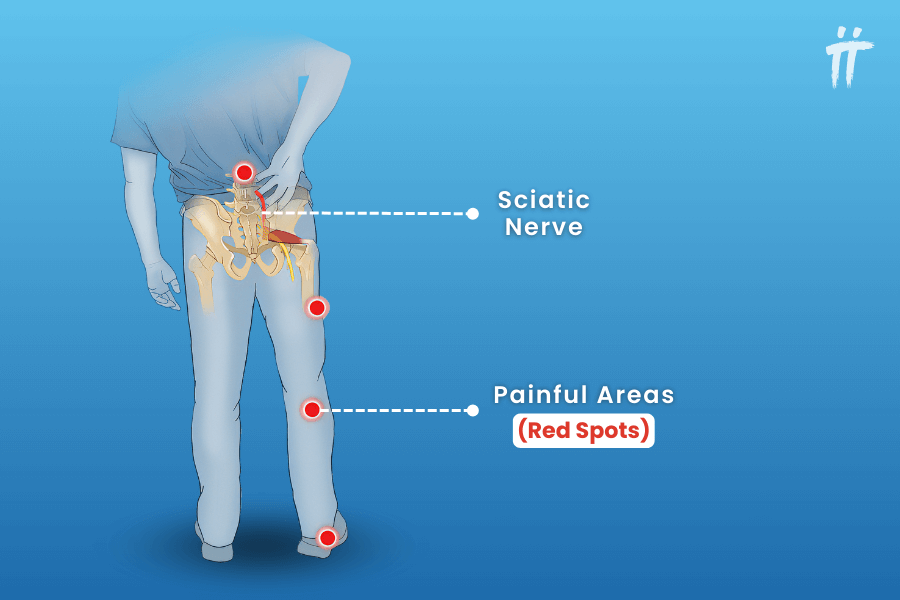
In addition, some sciatica symptoms may indicate more serious medical conditions, especially Cauda equina syndrome, infection or a spinal cord tumor. These conditions require urgent medical attention and may include the following symptoms:
- Loss of Strength in the Lower Body: Sudden loss of strength or weakness in the legs (especially weakness in both legs) and neurological symptoms may indicate a serious condition.
- Loss of Bladder or Bowel Control: Incontinence, inability to urinate, loss of bowel control are among the symptoms of Kauda Ekunia syndrome.
- Numbness or tingling in the pelvic area: Numbness or tingling around the groin, genital area or rectum (especially if it is persistent and on both sides) can be an indication of a serious problem.
- Sexual Dysfunction: Sexual dysfunction can also be a symptom of serious nervous disorders such as Cauda equina syndrome. Cauda equina syndrome is a compression of the nerves in the lower part of the spinal cord and can lead to serious symptoms. This can affect nerve control of the lower body, legs and pelvic organs. This can have negative effects on sexual function.
If you are experiencing any of these symptoms, it is important to seek urgent medical attention. Such symptoms can indicate the presence of potentially life-threatening conditions and require rapid intervention. Early diagnosis and treatment can reduce the risk of complications and lead to better treatment outcomes.
What Causes Sciatica?
Sciatica pain is a painful condition caused by compression, irritation or injury to the sciatic nerve. Therefore, understanding the condition that causes compression or irritation of the sciatic nerve will help guide treatment. The conditions that can cause sciatica pain are listed below.

- Lumbar herniated disc (Lumbar disc herniation): Discs are structures located between the vertebrae and act as shock absorbers. In the case of a herniated disc (disc herniation), the soft contents of these discs can protrude and put pressure on the nerves. Research shows that 90% of sciatica cases are caused by a herniated disc. A herniated disc can compress the sciatic nerve on one side, causing symptoms in one leg, or on both sides, causing symptoms in both legs.
- Sinal Canal Narrowing (Lumbar Spinal Stenosis): Spinal canal narrowing (spinal stenosis) is a condition usually associated with aging.p This narrowing can cause pressure on the spinal canal and where the nerve roots exit.
- Piriformis Syndrome: The piriformis muscle is a muscle located deep in the buttocks. Piriformis syndrome is a condition that occurs when the piriformis muscle spasms or swells. Piriformis syndrome can put pressure on the sciatic nerve. This can cause pain, numbness, tingling sensations along the back of the leg and towards the foot.
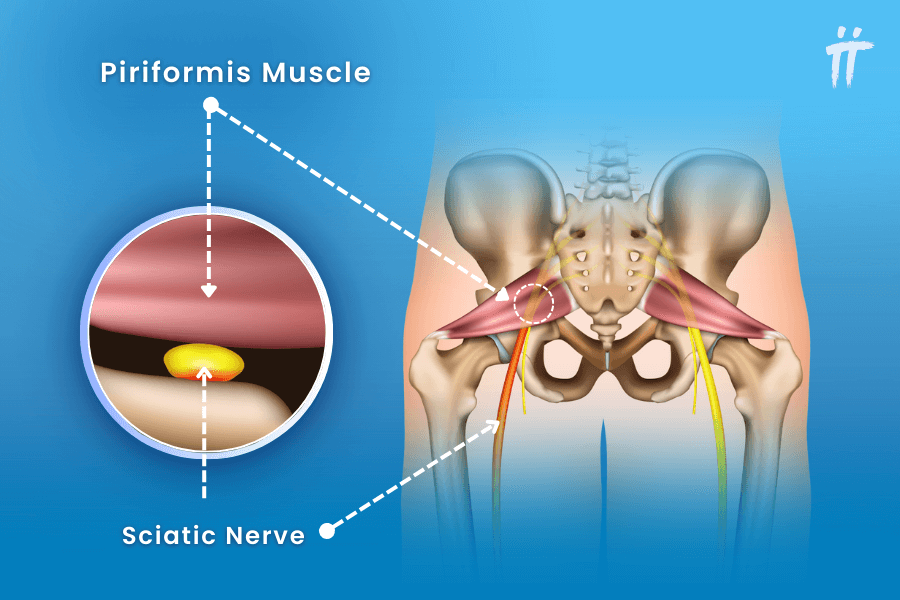
- Slipped Back (Spondylolisthesis): Spondylolisthesis is defined as the displacement of one of the vertebral bones, which should be aligned on top of each other, towards the front over the other. Slipped discs commonly occur in the lower part of the lumbar vertebrae. This slippage can put pressure on the nerve and cause sciatica pain. Slipped discs can cause bilateral sciatica and are more common in young people.
- Dgeneration of the bones of the spine: Wear and tear on the spine, facet joints and discs increases with age.e This can cause abnormal bone growths (bone spurs or osteophytes). Abnormally growing tissues can compress the sciatic nerve of one or more nerve roots in the lumbar spine.
- Scroiliac Joint Dysfunction: Irritation of the sacroiliac joint at the bottom of the spine can cause sciatica pain by affecting the L5 nerve located above the sacroiliac joint.
- Pegnancy: During pregnancy, increased weight and changes in the body can put pressure on the sciatic nerve.
Diabetes, trauma, overweight (obesity), tumors in the lower spine and blood clots are also risk factors for sciatica.
What are the Risk Factors for Sciatica Pain?
Sciatica pain can be triggered by a combination of many different factors. Certain risk factors can make you more prone to this condition. Risk factors that can affect the development of sciatic nerve compression are described in the following articles.
- Age: Sciatica is most common in people between the ages of 30 and 50. This is because with age, natural wear and tear occurs in the discs and spine.ge This increases the risk of conditions that can cause sciatica pain, such as a herniated disc (disc herniation). Herniated discs and bone spurs are among the most common changes that cause sciatica. The cause of sciatica is mostly herniated discs in people under the age of 40, but bone spurs and arthritis in older people.
- Overweight (Obesity): Excess weight puts extra stress on the spine. This can lead to pressure on the nerves and potentially sciatica pain.
- Occupational Factors: Some jobs, such as heavy lifting, sitting for long periods, operating machinery or driving, can increase the risk of sciatica.
- Lck of Physical Activity: People who sit for a long time or do not move much are more likely to have sciatica than active people.
- Dabetes mellitus (diabetes): In cases of uncontrolled diabetes, the risk of nerve damage is increased and the sciatic nerve can also be affected.
- Soking: Smoking impairs the nutrition of the discs and slows down the repair process. This increases the risk of problems such as herniated discs.
- Incorrect Posture and Poor Ergonomics: Prolonged incorrect posture and poor ergonomic conditions can increase stress on the spine and increase the risk of sciatica.
Being aware of these risk factors and making lifestyle changes where necessary can help reduce the risk of sciatica. Regular exercise, maintaining a healthy weight, good posture and ergonomic working conditions can be effective in this regard.
How is Sciatica Diagnosed?
Diagnosis of sciatica usually involves a number of methods to help identify the underlying cause. Therefore, if you are experiencing symptoms of sciatica, you should first consult an orthopedic doctor for a correct diagnosis and appropriate treatment.

The following general steps are taken in the diagnostic process of sciatica.
- Mdical History: Your doctor will review your medical history and ask detailed questions about your current symptoms. These questions may include the time of onset, intensity and spread of pain, and which activities relieve or worsen the pain.
- Pysical Examination: If your doctor suspects sciatic nerve compression, he or she will perform a physical examination to identify the pinched or irritated nerve root. During the physical examination, the doctor performs various tests to determine whether the sciatic nerve is affected. These tests usually include assessing the location and spread of pain, muscle strength, reflexes and sensation in the legs or feet. For example, a test known as the “straight leg raise test” can help detect pressure on the sciatic nerve.
However, the tests can only give positive results in cases such as herniated discs. This means that other causes of sciatica, such as inflammation or irritation of the nerve, may not cause pain in the tests. For this reason, your orthopedic doctor may refer you to imaging methods to identify the underlying problem and make a definitive diagnosis.
- Imaging Methods: If symptoms are severe or a more serious underlying condition is suspected, your doctor may recommend imaging tests such as MRI (Magnetic Resonance Imaging), CT (Computed Tomography) scan or X-ray (X-ray). These tests can help detect herniated discs, spinal stenosis, tumors or other abnormalities in the spine.
- Nerve Conduction Studies: In some cases, nerve conduction studies or nerve function tests such as electromyography (EMG) may be performed to determine the extent and location of nerve damage.
Sciatica Treatment
Treatment for sciatica often varies depending on the severity of the patient’s symptoms and the underlying causes. Sciatica treatment can be divided into surgical and non-surgical treatments. 80-90% of sciatica patients can alleviate their complaints without surgery. However, if sciatica is caused by conditions such as nerve compression, bone spurs and spinal stenosis, non-surgical treatments may not be effective.
- Medication: Medications such as painkillers and muscle relaxants can help relieve the symptoms of sciatica.
- Physical Therapy: The aim of physical therapy is to reduce the pressure on the nerve with individualized sciatica exercises. This can include stretching exercises or low-impact exercises such as walking, swimming and water aerobics. In addition, manual therapy, posture training and ergonomic adjustments can be made to reduce pain and increase mobility.
- Cld and Hot Application: Applying cold is effective in relieving sciatica pain and reducing swelling. You can use an ice pack for this. However, you should wrap the ice pack with a towel to avoid ice burns on your skin. Apply several times a day for 20 minutes. After a few days of cold application, you can switch to hot application. You can apply it in the same way several times a day and for 20 minutes. You can make adjustments according to which best addresses your complaints.
- Spinal Injections: In cases of severe pain and inflammation, corticosteroid injections can be given to reduce the inflammation around the nerve. Local (regional) anesthesia is used for these injections. The effect usually lasts up to 3 months and can be applied up to 3 times in a year.
Acute sciatica symptoms, i.e. those with a rapid onset and short duration, usually improve with 4 to 6 weeks of non-surgical treatment. However, surgery may be necessary in chronic sciatica pain lasting longer than 8 weeks. Because in this case, sciatica pain can be caused by conditions such as herniated discs, narrowing of the lumbar canal, slipped discs or degenerative disc disease.

- Sciatica Surgery: Surgical intervention in the treatment of sciatica pain is usually considered for patients who do not respond to other treatment methods (medication, physical therapy, injections) or who show signs of severe nerve damage (loss of bladder or bowel control, severe motor loss). The problems that cause sciatica pain are often related to the spine, so surgery usually targets specific spinal problems. The two main sciatica surgery methods are: Discectomy and Laminectomy.
- Discectomy : This surgery is usually performed for sciatica pain caused by a disc herniation (hernia). Its purpose is to remove part of the herniated disc that is pressing on the nerve.
- Laminectomy: This surgery is used to treat conditions such as spinal stenosis (narrowing of the spinal canal). Its purpose is to provide more space for the nerves by removing structures that put pressure on the nerves.
Postoperative recovery time varies depending on the general health status of the patient, the type of surgery and the extent of the surgery. A comprehensive rehabilitation program before and after surgery plays an important role in the recovery process. It is important to have a detailed discussion with your doctor in order to manage the surgical process in the best way and to get the right information.
What Should Sciatica Patients Pay Attention To?
Sciatica patients should take certain measures to manage symptoms and reduce the severity of pain. Some important points that sciatica patients should pay attention to are listed below.
Correct Posture
During prolonged sitting or standing, it is important to maintain correct posture. Ergonomic chairs and appropriate sitting positions should be used to support the spine and reduce pressure.
Regular Exercise
Regular light exercises help to strengthen the spine and abdominal muscles. Low-impact activities such as swimming, walking and pilates are preferable.
Flexibility Exercises
Regular flexibility and stretching exercises can help reduce muscle tension and relieve nerve pressure.
Kilo Control
Maintaining a healthy body weight reduces the load on the spine and can relieve sciatica pain.
Avoid Heavy Lifting
Lifting heavy objects puts extra stress on the spine. If you have to lift, it is important to use the right techniques and work your leg muscles.
Sleep Position
It is important to keep the spine in a natural position while sleeping. Lying on your side and placing a pillow between the knees can provide support for the spine.
Hot and Cold Compresses
Hot and cold compresses can be effective to relieve pain. Cold application can be done for the first 48 hours and hot application can be done afterwards.
These measures can help manage sciatica pain and improve quality of life. However, it is important to talk to your doctor before starting any new exercise program or implementing lifestyle changes.
Conclusion
When sciatica is left untreated, serious complications such as chronic pain, motor and sensory loss, impaired bladder and bowel control can occur. These conditions can significantly affect daily life and quality of life. There is also an increased risk of permanent nerve damage and psychological problems (depression, anxiety).
It is therefore important that people with sciatica symptoms seek early medical help and do not underestimate their condition. Early diagnosis and treatment can help prevent these complications.
If you also suffer from symptoms of sciatica (such as pain in the lower back and buttocks that radiates down the leg) and this interferes with your daily life, you should not delay treatment. You can contact us to get support from our specialist doctors in the diagnosis and treatment of sciatica. You can send us your questions about sciatica from our social media accounts or our website.



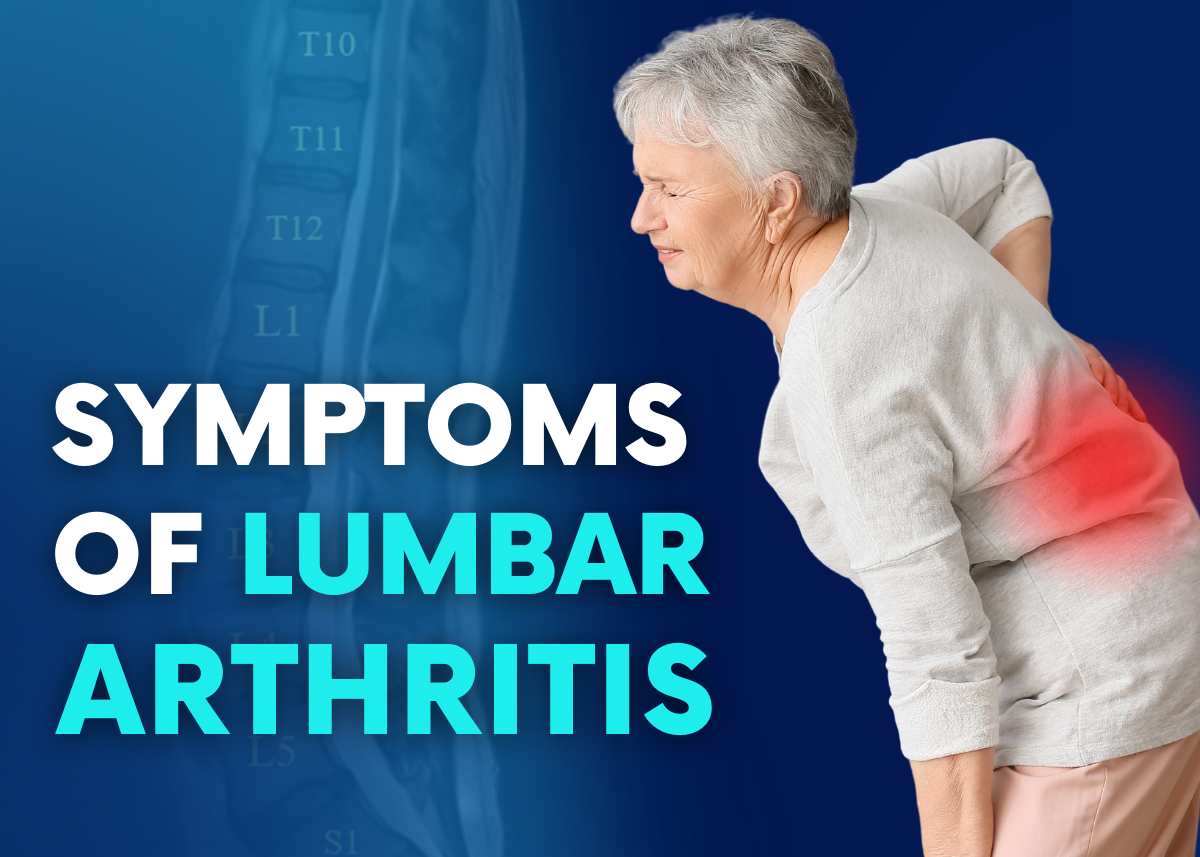




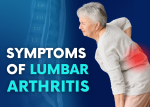
Leave a Comment